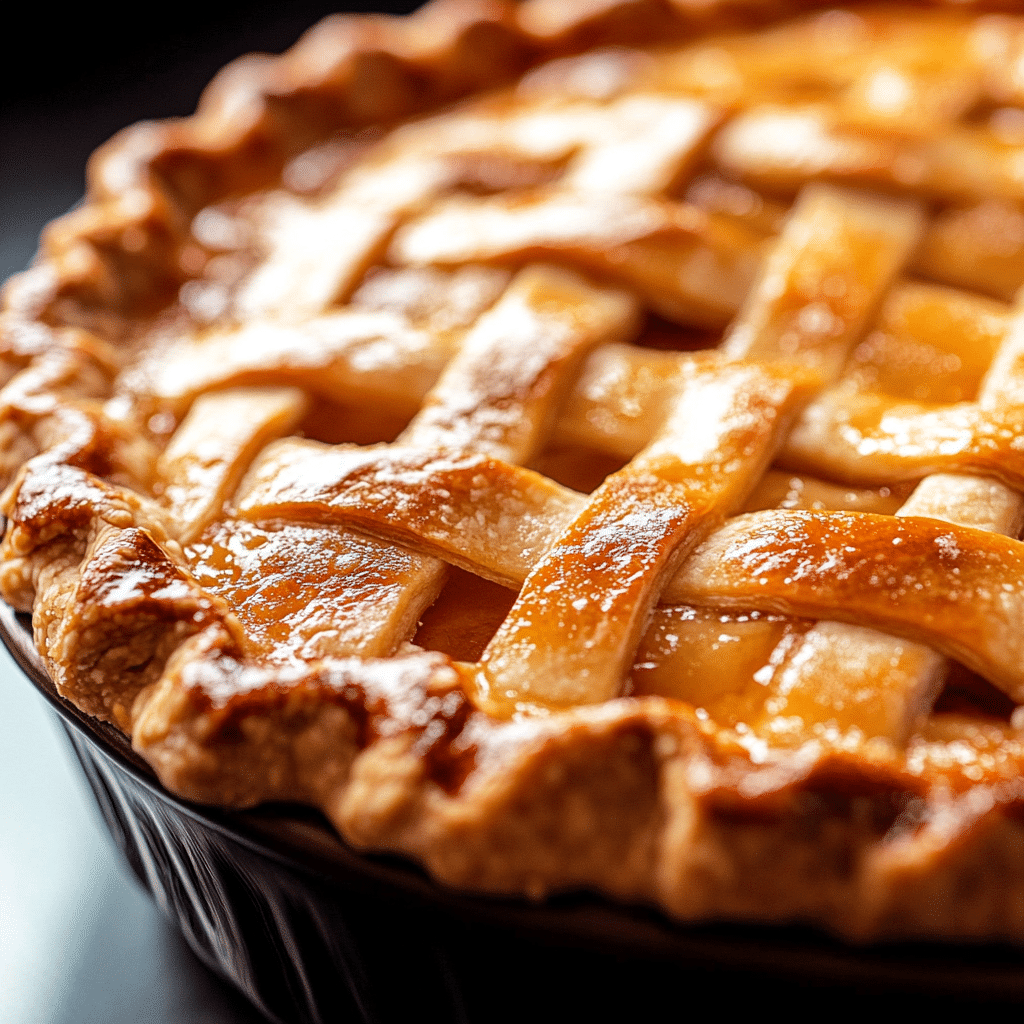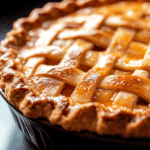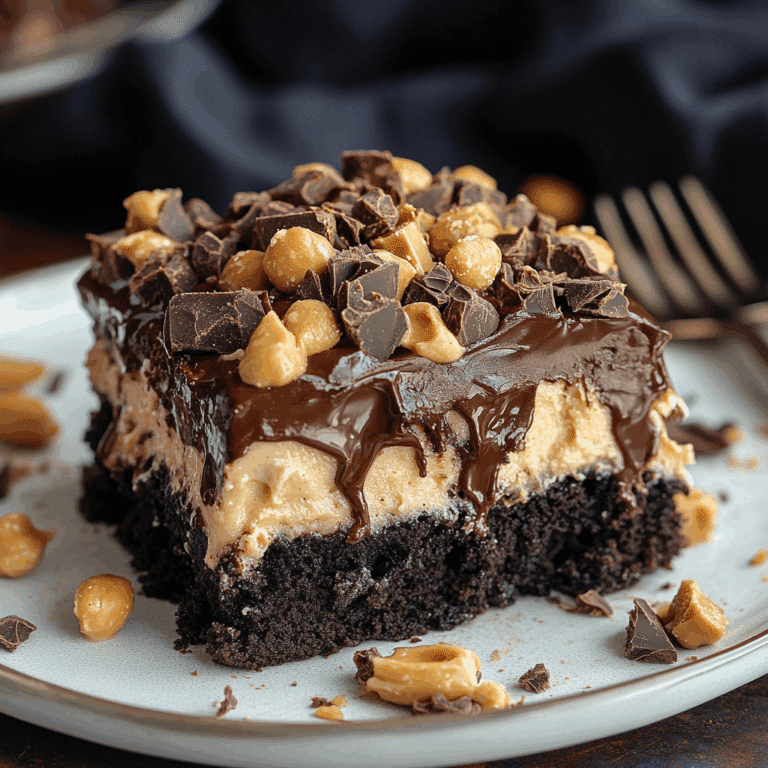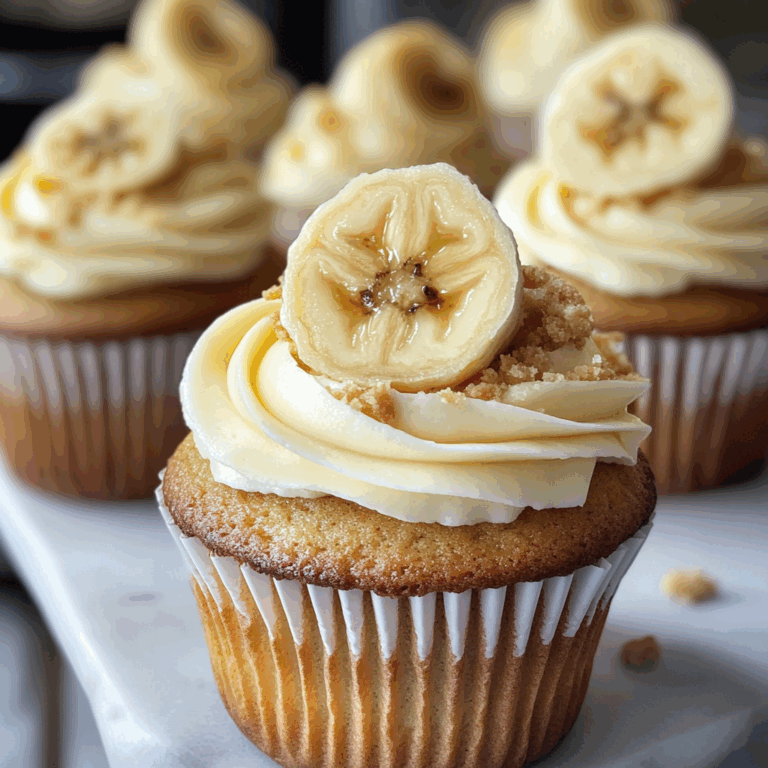How to Perfect All Butter Pie Crust Every Time

Mastering the perfect All Butter Pie Crust is an essential skill for any home baker craving that rich, flaky foundation for pies and tarts. This crust offers an irresistible buttery flavor with a delicate crunch that supports any filling, sweet or savory. With simple, easy-to-follow tips and a focus on the finest ingredients, you’ll learn how to bake an exquisite crust that impresses every time.
Why You’ll Love This Recipe
- Pure Butter Flavor: Uses only quality butter for a rich, authentic taste that melts in your mouth.
- Flaky Texture: Achieves perfect flakiness, balancing crispness without crumbling apart.
- Simple Ingredients: Made from pantry staples with no complicated additives or shortening.
- Versatile Base: Works beautifully for both sweet and savory pies.
- Foolproof Process: Designed for home bakers of all levels, ensuring consistent success.
Ingredients You’ll Need
No need for exotic ingredients here—this All Butter Pie Crust is delightfully simple, letting each element shine in texture and flavor.
- Cold Unsalted Butter: The star of the show, cold butter creates those iconic flaky layers.
- All-Purpose Flour: Provides the perfect structure without toughness.
- Salt: Enhances flavor and balances the richness of butter.
- Ice Water: Helps bring the dough together while keeping everything chilled.
Variations for All Butter Pie Crust
Feel free to experiment with small tweaks to customize your crust’s flavor, texture, and dietary fit. This base is highly adaptable!
- Herbed Crust: Add finely chopped fresh herbs like thyme or rosemary for a savory twist.
- Whole Wheat Blend: Substitute half the flour with whole wheat for added nuttiness and nutrition.
- Gluten-Free Version: Use a reliable gluten-free flour mix suited for baking.
- Sweetened Crust: Add a tablespoon of sugar to the dough for pies with fruit or custard fillings.
- Spiced Crust: Incorporate cinnamon or nutmeg for holiday-inspired pies.

How to Make All Butter Pie Crust
Step 1: Prepare Ingredients and Equipment
Start with cold butter and ice water to keep the dough cool and prevent premature melting. Ensure your flour and salt are measured accurately. Chill your mixing bowl and utensils if possible.
Step 2: Cut Butter into Flour and Salt
Using a pastry cutter, two knives, or your fingertips, cut the cold butter into the flour and salt until pieces resemble coarse crumbs with some pea-sized chunks remaining for flaky layers.
Step 3: Add Ice Water Gradually
Pour in ice water tablespoon by tablespoon, gently stirring until the dough just holds together without being sticky or wet. Avoid overmixing to keep crust tender.
Step 4: Form Dough and Chill
Gather dough into a flat disc, wrap in plastic, and refrigerate for at least one hour. This rest lets the gluten relax and the butter firm up for optimal flakiness.
Step 5: Roll Out the Dough
Lightly flour your surface and roll dough from the center outward into a circle about 12 inches across, turning the dough occasionally to prevent sticking.
Step 6: Transfer and Fit into Pie Dish
Carefully lift the dough and place it into your pie pan, pressing gently to fit without stretching. Trim excess edges and tuck or flute the rim as desired.
Step 7: Blind Bake or Fill and Bake
Depending on your pie recipe, you may blind bake (prebake) the crust to prevent sogginess or fill it and bake together. Use pie weights or dried beans for blind baking to keep the shape.
Pro Tips for Making All Butter Pie Crust
- Use the Coldest Butter: Keep butter chilled and handle dough quickly to maintain flakiness.
- Don’t Overwork the Dough: Overmixing develops gluten which makes the crust tough, so mix just until combined.
- Chill Twice: Rest dough before rolling and again after shaping for best texture.
- Roll Gently: Use light, consistent pressure to avoid compressing the fat and toughening dough.
- Properly Preheat Oven: Make sure your oven is hot enough to set the crust quickly, creating that golden finish.
How to Serve All Butter Pie Crust
Garnishes
Sprinkle a light dusting of powdered sugar or brush the baked crust with melted butter mixed with a pinch of cinnamon for a lovely finish. Fresh herbs or edible flowers add charm to savory pies.
Side Dishes
Pair this luscious crust-based pie with whipped cream, ice cream, fresh fruit, or a simple salad when serving a savory version for a complete meal.
Creative Ways to Present
Make mini hand pies or tartlets using the same dough for individual servings. Try lattice or braided edges to add a decorative touch that wows guests.
Make Ahead and Storage
Storing Leftovers
Store leftover baked pie at room temperature for up to two days or refrigerate if it contains dairy or egg-based fillings. Keep the crust crisp by wrapping loosely or using a pie saver.
Freezing
Wrap unbaked pie dough tightly in plastic wrap and freeze for up to one month. Thaw in the fridge overnight before rolling out to maintain texture and ease of handling.
Reheating
Warm leftover pie in a preheated oven at 350°F (175°C) for 10-15 minutes to refresh the flaky texture and bring back that just-baked aroma.
FAQs
Can I substitute butter with shortening or margarine?
While shortening or margarine can create a tender crust, using all butter provides the best flavor and flakiness in an all butter pie crust.
Why is my pie crust tough instead of flaky?
Toughness usually comes from overworking the dough or using warm butter, which develops gluten; stick to cold ingredients and minimal mixing for flaky results.
How do I prevent the crust edges from burning during baking?
Cover the edges with foil or a pie crust shield halfway through baking to protect them from over-browning while the rest cooks through.
Can I make this pie crust vegan?
This recipe specifically relies on butter for its signature taste and texture, but you can experiment with plant-based butter alternatives, though results may vary.
Is it better to use cold water or vodka when mixing the dough?
Cold water works perfectly by keeping the dough firm, while some bakers use vodka to limit gluten development, but it’s optional and not necessary for a great crust.
Final Thoughts
Making a perfect All Butter Pie Crust is easier than you might think and definitely worth the effort to elevate your pies. With these straightforward steps and insider tips, you’ll create flaky, flavorful crusts that become the star of every dessert or savory creation. Give this recipe a try today—it might just become your new favorite baking secret.
PrintAll Butter Pie Crust
Master the perfect All Butter Pie Crust with this simple recipe that delivers rich, buttery flavor and flaky texture. Made from pantry staples like cold unsalted butter, all-purpose flour, salt, and ice water, this crust is versatile for both sweet and savory pies. Follow easy steps and pro tips for foolproof results every time, creating a delicious base that enhances any filling.
- Prep Time: 20 minutes
- Cook Time: 15-20 minutes (blind baking, optional)
- Total Time: 1 hour 40 minutes
- Yield: One 9-inch pie crust 1x
- Category: Dessert
- Method: Baking
- Cuisine: American
- Diet: Vegetarian
Ingredients
Ingredients
- 1 cup (2 sticks) cold unsalted butter, cut into small cubes
- 2 1/2 cups all-purpose flour
- 1 teaspoon salt
- 6 to 8 tablespoons ice water
Instructions
- Prepare Ingredients and Equipment: Start with cold butter and ice water to keep the dough cool and prevent premature melting. Measure your flour and salt accurately. If possible, chill your mixing bowl and utensils to maintain temperature.
- Cut Butter into Flour and Salt: Using a pastry cutter, two knives, or your fingertips, cut the cold butter into the flour and salt until the mixture resembles coarse crumbs with some pea-sized chunks remaining to create flaky layers.
- Add Ice Water Gradually: Pour in ice water one tablespoon at a time, gently stirring the dough until it just holds together without being sticky or wet. Avoid overmixing to keep the crust tender.
- Form Dough and Chill: Gather the dough into a flat disc, wrap it tightly in plastic wrap, and refrigerate for at least one hour. This rest allows the gluten to relax and the butter to firm up for optimal flakiness.
- Roll Out the Dough: Lightly flour your work surface and roll the dough from the center outward into a circle about 12 inches in diameter, turning the dough occasionally to prevent sticking.
- Transfer and Fit into Pie Dish: Carefully lift the dough and place it into your pie pan, pressing gently to fit without stretching. Trim any excess dough and flute or tuck the rim as desired.
- Blind Bake or Fill and Bake: Depending on your recipe, either blind bake the crust using pie weights or dried beans to prevent sogginess or fill and bake together with your filling.
Notes
- Use the coldest butter possible and handle dough quickly to maintain flakiness.
- Do not overwork the dough to avoid tough crust; mix just until combined.
- Chill the dough twice: once after mixing and again after shaping for best texture.
- Roll gently with light, consistent pressure to avoid compressing the fat.
- Preheat the oven fully to ensure the crust sets quickly and achieves a golden finish.
Nutrition
- Serving Size: 1/8 of crust
- Calories: 200
- Sugar: 0g
- Sodium: 150mg
- Fat: 15g
- Saturated Fat: 9g
- Unsaturated Fat: 6g
- Trans Fat: 0g
- Carbohydrates: 18g
- Fiber: 1g
- Protein: 2g
- Cholesterol: 45mg
Keywords: all butter pie crust, flaky pie crust, buttery pie crust, homemade pie crust, pie crust recipe







